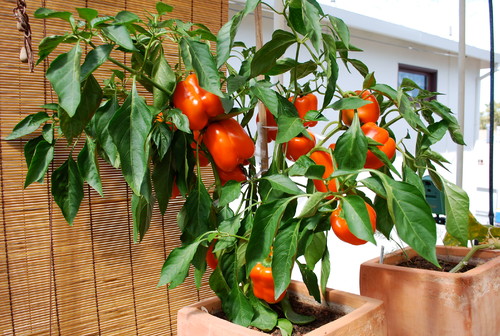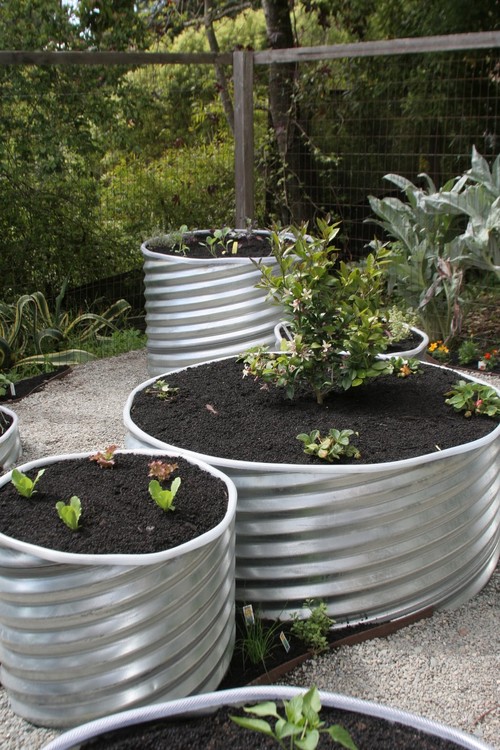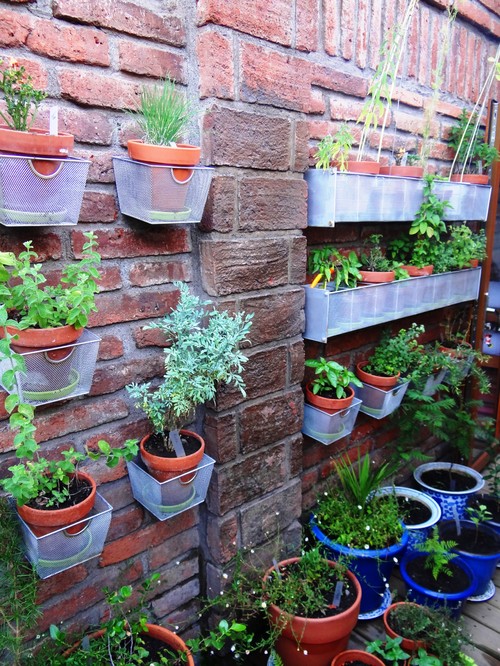If you would ask Mary, Mary, Quite Contrary how her garden grows in 2016, she'd most likely reply, "In containers!" Container gardens are popping up everywhere, even with houses on vast yards, because of their ease, accessibility, and protection from critters. If you have pots standing sentry on either side of your new garage door, put them to work this growing season by adding herbs and vegetables in with your flowers and vines. After all, nothing says "welcome home" like a beautiful garage door and a vine-ripened tomato.
Here are a few container gardens to inspire you.
Put some pep on your steps.
Peppers are a great way to add height, color, and taste to your container garden. They, like tomatoes, have several varieties, so choose the size of your plant based on the size of your pot. Remember, large vegetables like these require plenty of moisture and nutrients, so fertilize regularly for the best results.
Photo by Steve Masley Consulting and Design - Browse eclectic deck photos
Add some shine to your vines.
Galvanized containers, like these pictured below, add an edgy, industrial quality to container gardening. (Speaking of edgy, did you notice the clear plastic hoses they used to protect the edges?). Placed in groups of three and in various sizes, they allow for several plants to be planted alongside each other. Perfect for large herbs like basil and oregano, as well as large crops like potatoes and squash, these planters are a great DIY project for our region, particularly with our access to agricultural staples, tools, and resources.
Photo by NATALIE SERDIUK - More eclectic landscape photos
Or scale it up.
No one says your container garden has to live on the ground. Mounted to your home's exterior, your garden can increase its square footage without taking up precious driveway or sidewalk space, while still providing a luscious (and delicious) backdrop for your home. Keep in mind, containers placed against brick or bright siding will need to be watered more often as the heat and reflected light from the home will increase evaporation rates. That being said, a little care will go a long way--most vegetables and plants will thrive with a lot of sun and water.







